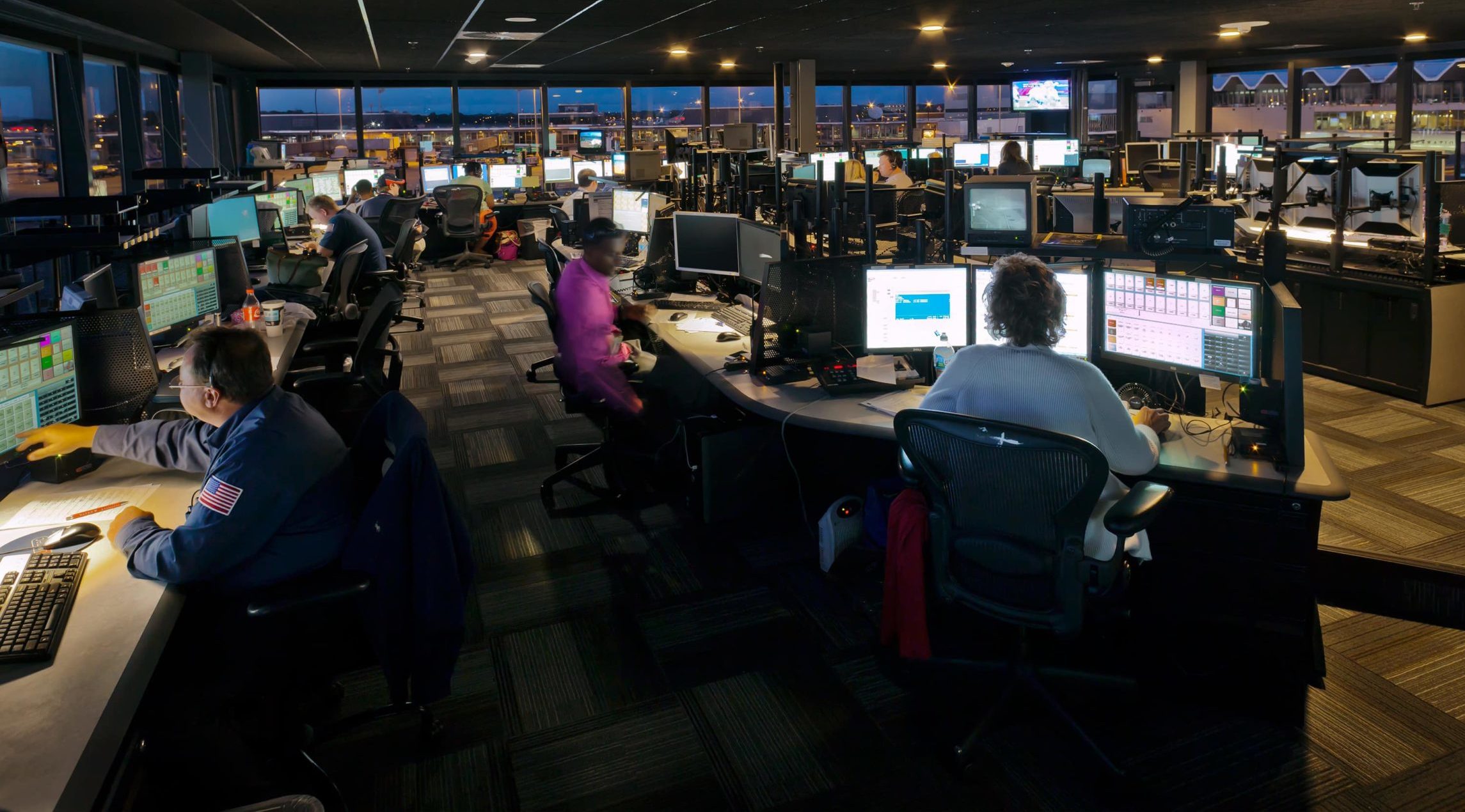
DELTA AIRLINES UPGRADES GROUND CONTROL CENTER IN MINNEAPOLIS
Each year more than 30 million travelers pass through Minneapolis-St. Paul International Airport (MSP). Most are there to fly Delta Air Lines, the airport’s largest carrier. On peak days, Delta has more than 400 departures to 120 nonstop destinations.
What all those passengers don’t see as they travel through the airport is the small army of people behind the scenes keeping everything on the ground running smoothly. The staff of the airline’s control center oversees every aspect of Delta’s ground operations. Control center staff coordinates communication with pilots, baggage handlers and gate agents within the terminal as well as the caterers, cleaners and maintenance personnel that service the planes on the tarmac.
Recently, Delta completed a $3.5 million renovation of the control center at MSP that included replacing outdated technology as well as installing all new control room furniture. The radios and computers in the original control room had passed their prime and the control room consoles had been designed to hold cumbersome CRT monitors.
In the air and on the ground, time is money for airlines of all sizes. The ability of control room operators to communicate quickly and easily with each other and workers on the ground helps keep flights running on schedule. Delta worked closely with integrators to design a new control room that would improve communication and increase efficiency. This included installing all new computers, monitors, intercoms and radio equipment.
A significant aspect of the control room renovation was the installation of ergonomically designed control room consoles to house the new equipment. Several factors complicated the selection of new consoles. First, the new console layout needed to fit the existing control room while also adding three workstations essentially within the same footprint. Second, the control room needed to remain operational throughout the renovation, so installation of the consoles had to take place in phases.
Delta chose Winsted Corporation to provide the control room consoles because the company was able to meet both these requirements and offered a feature-rich console design. The airline provided Winsted with an initial layout concept from which the console manufacturer designed a series of Winsted Sight-Line consoles to fit the existing footprint with the additional three workstations. Sight-Line consoles are ergonomically designed to provide operators with a comfortable, efficient workspace that is ideal for 24/7 control room environments such as Delta’s control center.
Operators in Delta’s control center are trained on all positions so they may work at the board confirming gates with incoming flights one day and may direct catering on the ground the next. The constant rotation helps keep operators alert and engaged, but makes the flexibility of each workstation imperative to accommodate the ergonomic needs of individual operators.
Sight-Line consoles feature Winsted’s Versa-Trak monitor mounting system, which makes it possible for operators to easily adjust viewing angles and sightlines for personal needs, regardless of which workstation they are staffing. The new control center has a total of 32 workstations, which allows enough space for all of the day-to-day operations as well as a few additional workspaces for seasonal needs such as deicing operations.
Each workstation is equipped with several monitors (the number varies depending on the function of the workstation), PCs, radio, telephone and intercom. “Our old consoles did not provide adequate accommodations for PCs and the wiring was a mess,” said Richard Benz, MSP Control Center Department Manager for Delta Airlines. “Now our operators have easy access to the PCs and Winsted’s cable management system keeps all the wiring organized and under control.”
Sight-Line consoles feature easy-access CPU storage in the base of the console and a dual cable raceway that keeps signal and power cords separate, organized and out of the way. Winsted also created custom shelves at each workstation to hold radio speakers for the control center’s communication system. Dividers between each workstation give operators a defined workspace and certain level of privacy to enhance concentration.
The architectural firm Burns & McDonnell handled the design and engineering of the new control center. Installation of the new consoles was completed by Winsted’s professional installation team. In order to make it possible for the control center to remain operational throughout the upgrade, the installation was completed in phases and largely overnight, between 10 p.m. and 6 a.m. This minimized disruption to operators.
Further complicating the installation was the number of vendors that needed to complete different aspects of the integration. “The installation of the new equipment and consoles was our biggest concern going into this upgrade,” said Benz. “Every inch of the control center had to be redone without disrupting operations because the company didn’t want to incur the expense of building a temporary facility.” To accomplish this, equipment from several workstations was temporarily transferred to the three new workstations while work was completed in particular areas of the control center. Workstations were sort of leapfrogged around to keep operations running throughout the install.
“The installation went very smoothly, especially considering the sheer number of moving parts that had to be coordinated,” said Benz. “Now that it’s complete our operators are very pleased with the results.”





